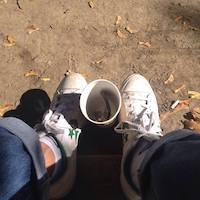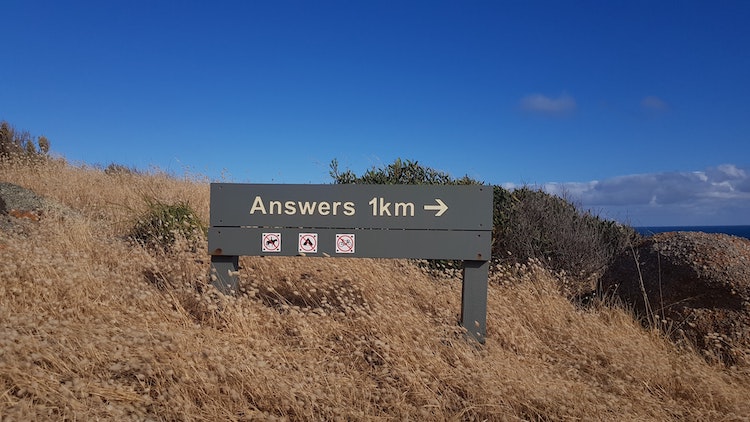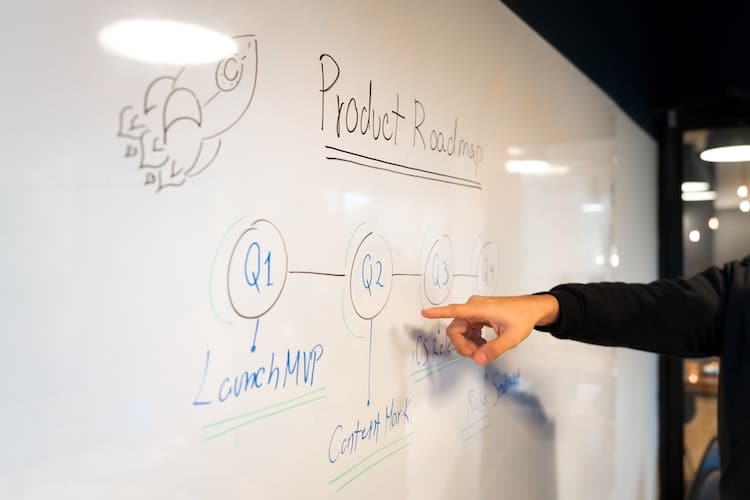Why Use Confluence For Product Requirements
As with everything else in product management, people have some pretty strong opinions about using Confluence for product requirements documentation versus one of the more specialized tool.
Your own opinion not withstanding, unless you rule your company like a personal fiefdom and do not have to worry about the opinions of employees, bosses and co workers, there is a good chance that you will run into a situation where you need to use Confluence.
Confluence’s advantages include:
- A central, up to date point of reference for all requirements.
- Version control of requirements changes.
- Access control for viewing and editing requirements.
- Automation for frequent requirement gathering tasks.
- Collaboration tools, like automatic notification of team members when documents change.
Given that Confluence is often adopted company wide, it is also a good tool for executing you product requirements document communication strategy.
How To Document Product Requirements In Confluence
Before you can document product requirements in Confluence, you need to can create a space to keep everything related to a specific product in one place (i.e project plans, product requirements, blogs and internal communication). Do this by clicking the “CREATE” button.
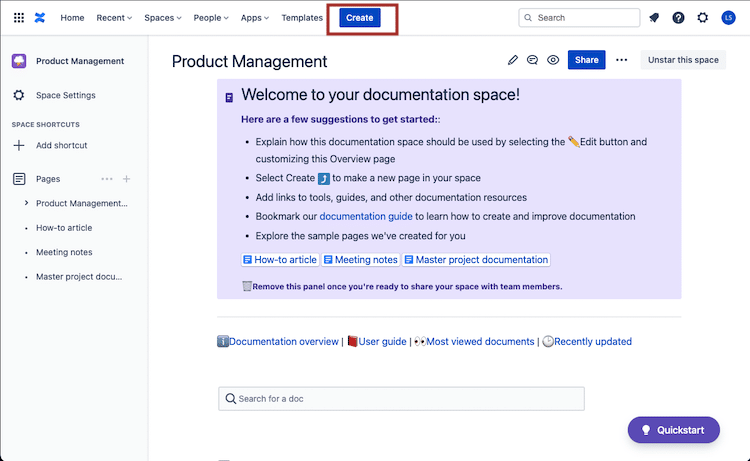
The benefits of this space are that it allows for:
- Collaboration: a single space or page allows for better communication and collaboration between the people involved in the product or requirement.
- Progress Tracking: Keep on top of your team’s progress against specific requirements,
- Page History: See the differences between the first and last change. Find out what has been changed
Requirement Gathering Workflow in Confluence
So now that you have your space set up, the next step is building out a requirement gathering workflow, which consists of two main parts:
-
- Selecting the Confluence documentation to use, so we will look at product requirement documentation options available within the platfrom.
- Mapping out the process user follow within Confluence. Using the deadly duo of Confluence and Jira (Atlasssian’s issue tracker), your have multiple options for documenting product requirements depending on your degree of obsessive compulsiveness*:
- Low level OCD: Put the entire specification in one Confluence document.
- Mid level OCD: Build the requirements structure in Jira and flush out the details of the requirements on Confluence pages.
- Over the top OCD: A master product requirement document, with subpages interconnected with Jira issues so that you can track progress. OCD jokes aside, this is how the combination of Jira/confluence is supposed to work and what we will eventually get around to showing you.
Product Requirements Document Options in Confluence
Use Pre Existing Product Requirement Templates
Using a pre existing product requirements document template already available in Confluence. This is probably the best option for most users out there. Follow along in the images below to deploy an existing template. There are two ways to go about doing this:
- Use the “Create” Button
- Use the “Templates” Menu Item
Use The "Create" Button To Create a Document From A Template
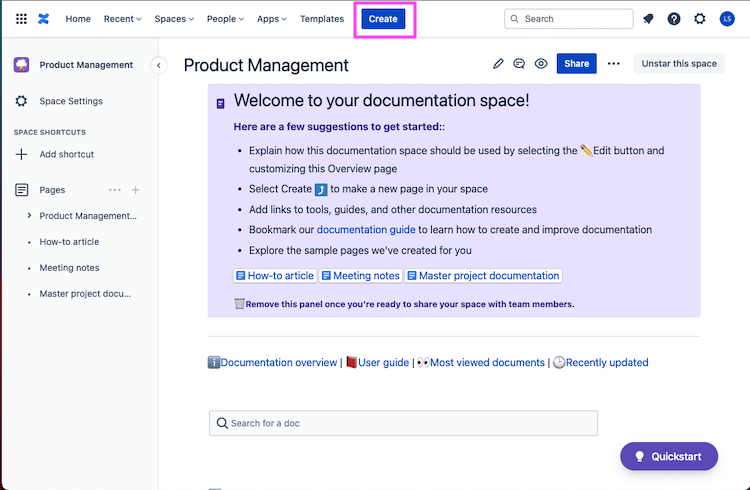



Use The "Templates" Menu Item To Create a Document From A Template



Use Custom Product Requirements Document Templates
If you need to do more with Confluence documents that what is available out of the box, consider customizing the templates to your needs.
We’ve tackled the topic of using custom documents within Confluence previously, so we will just link to the documents from here. When it comes to using custom documents in Confluence, you have two options:
- Customize an existing “Blueprint” template.
- Build your own template from scratch.
We took also a deep dive in to process of how to create a product requirements template in Confluence for your benefit, so do us yourself a favor and read it!!!) to ease the pain of documenting product requirements details .
Putting Confluence To Work in Documenting Requirements
In building out the process you want to implement for gathering requirements within your organization and since we have already gone to the trouble of teaching you about Confluence templates, we are going to ignore the fact that you can use Jira as a stand alone tool to deal with product requirements gathering.
Using Jira as a standalone requirement gathering tool is a bit troublesome as it requires the proper and consistent use of labels, components and product descriptions to make filtering and searching for specific requirements much easier and faster. In short, its something you probably wouldn’t do.
If you haven’t already, you’ll learn combining Confluence with tool Jira provides particular advantages for requirements gathering and overall requirements management that make your life easier:
- You gain coherent and consistent information management, task management, and progress monitoring across the entire application lifecycle and all software development workflows.
- In addition, there are various automation options around software change, configuration management, project planning, and monitoring.
This is because the platform allows for the following functionality that makes your life much easier as a product manager:
Jira development issues and tasks can be created directly from Confluence requirements pages.
You can collect and display Jira issues on a Confluence page.
Include reports and charts with information from JIRA into Confluence
Suggested Confluence Workflow
After deploying a product requirements template, it is suggested that you follow a workflow that looks something like the following:
